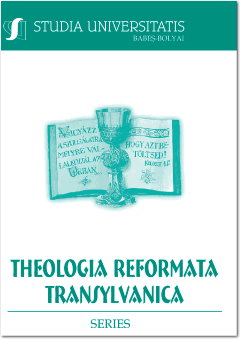ANALÓGIÁK AZ ERDÉLYI MENNYEZETFESTMÉNYEK ÉS A KATAKOMBAFRESKÓK KÉPTEOLÓGIÁJÁBAN
ANALOGIES BETWEEN THE IMAGE THEOLOGY OF THE TRANSYLVANIAN CEILING PAINTINGS AND THE CATACOMB FRESCOS
Author(s): Olga LukácsSubject(s): Christian Theology and Religion, History of Church(es), Theology and Religion, Comparative Studies of Religion, Pastoral Theology
Published by: Studia Universitatis Babes-Bolyai
Keywords: coffered ceilings; Protestant image theology; religious art; Protestant religious art; figurative representations;
Summary/Abstract: The age of institutionalization and consolidation of the Reformation coincides with the blooming of Renaissance art, and this is why this style was adopted by religious architecture and ornamentation. The emergence of the new style gradually led to the appearance of paintings on the tablets in the Protestant churches as well, being decorated with images, in particular, the choir boards and ceiling coffers.The primary source of the painted coffered ceilings is considered to be the painting on wooden boards during the Italian Renaissance and starting from here, in the entire Carpathian Basin and in Transylvania, the ancient art of catacomb painting has re-emerged through these painted coffers. Like the frescoes in the catacombs, the painted ceilings are not icons, their vast panorama turning, rather, towards metacommunication through which eternal life can be contemplated. As with the motifs used in the catacomb paintings, all the figures on the coffered ceilings represent symbols and emblems of the church and nature, finding a justification in the Protestant theology of the image. The painted ceilings therefore represent a means of metacommunication, of mediation, referring to the invisible world of the Scriptures and Gospels, this invisible world being depicted by real or imaginary animals and plants, and generally through figurative and floral ornamentation. The coffers are the ideal of the sanctification of life, the life created by God, which is sublimated into a higher existence, honouring God through the paintings. This study parallels the richness of motifs on the painted boxes and the frescoes in the catacombs, presenting the found similarities.
Journal: Studia Universitatis Babeș - Bolyai Theologia Reformata Transylvanica
- Issue Year: 64/2019
- Issue No: 2
- Page Range: 259-278
- Page Count: 20
- Language: Hungarian

